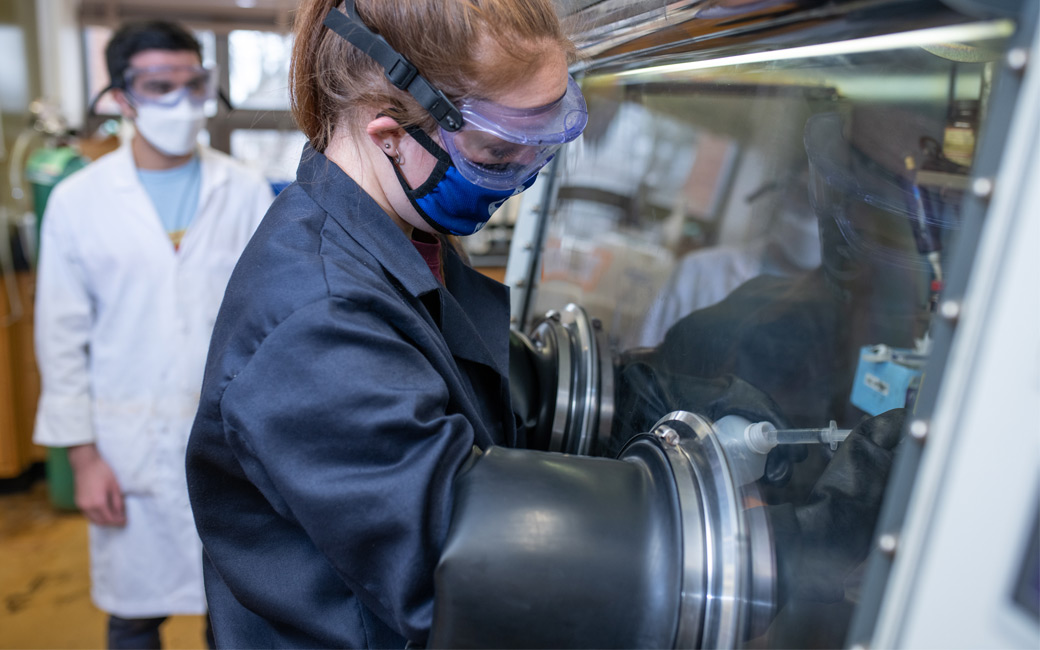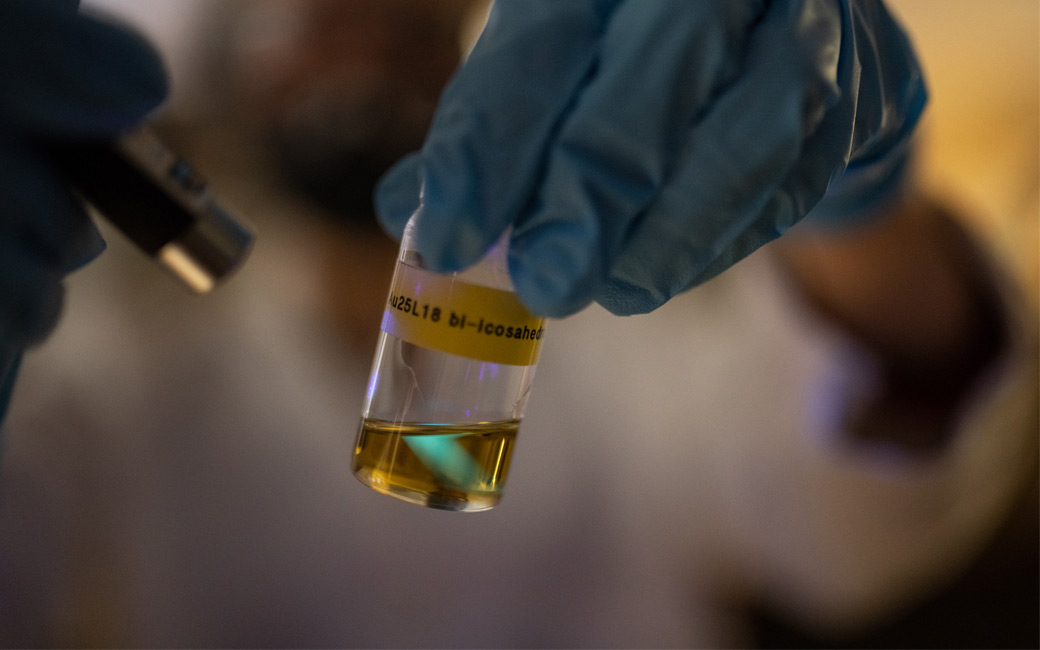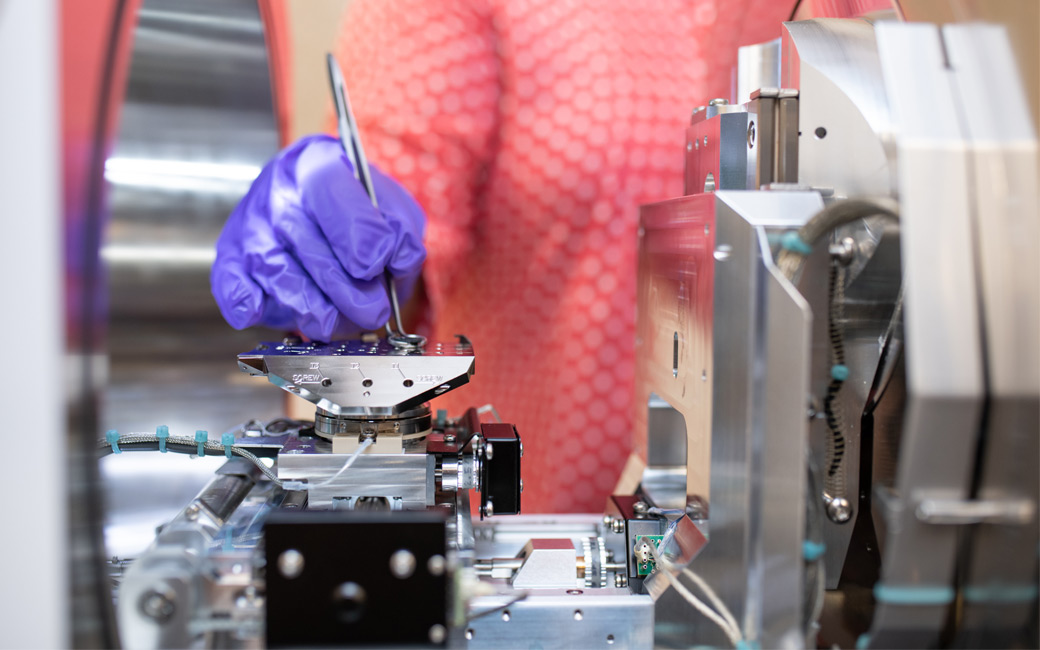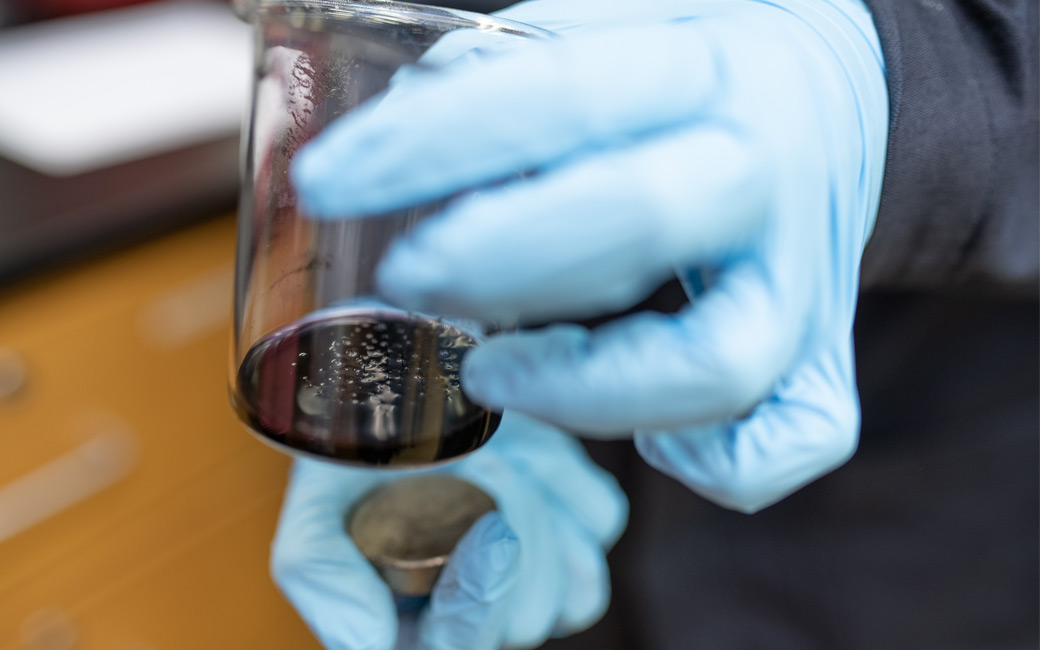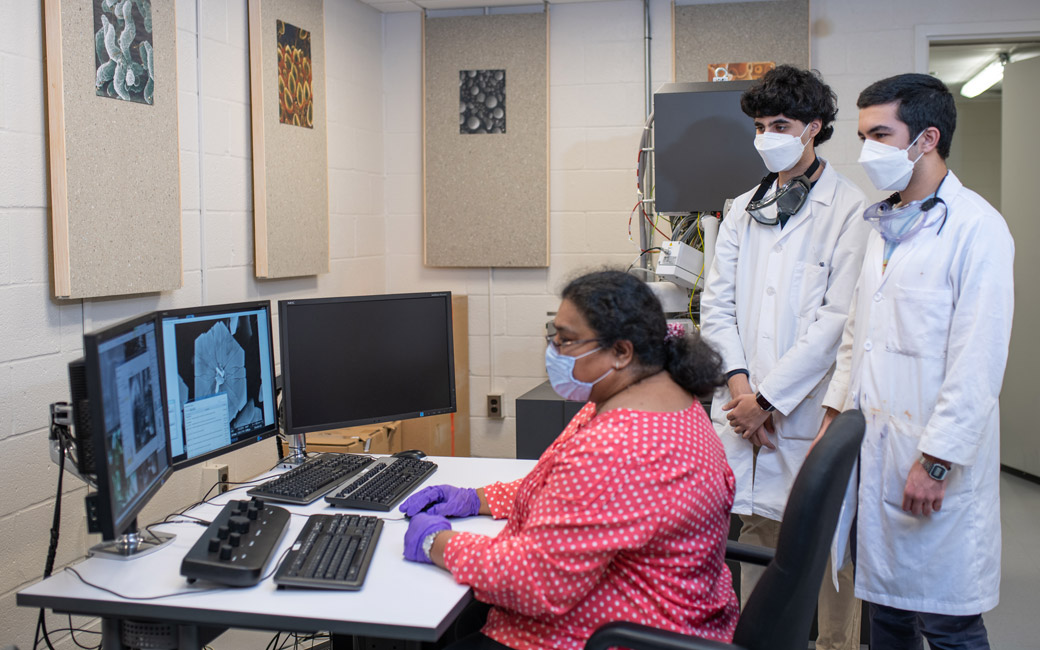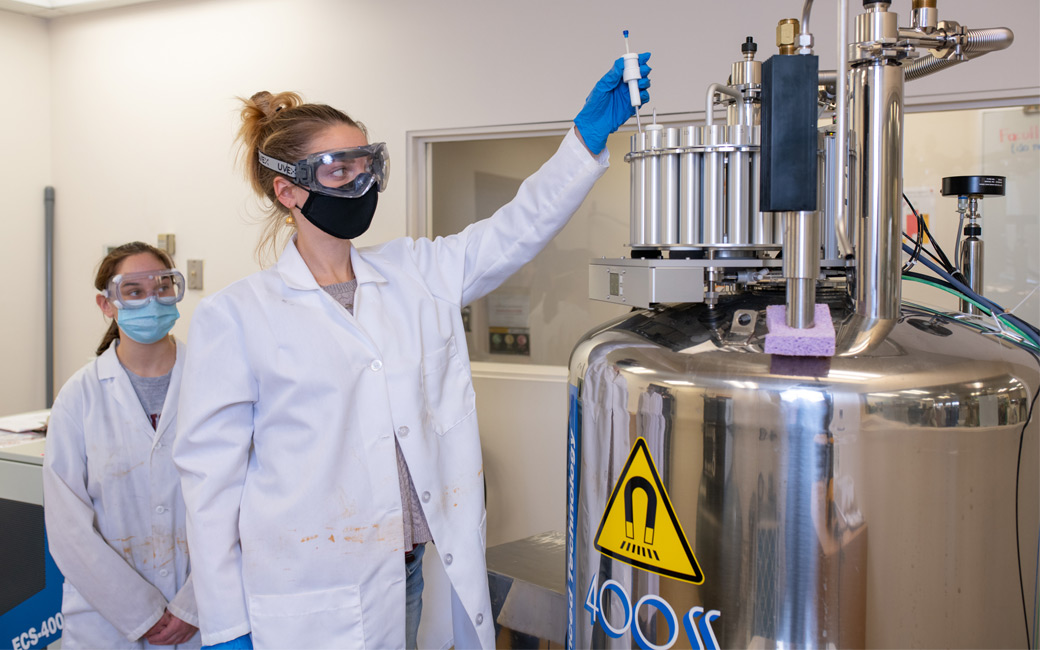
Towson University student researchers create building blocks of the future
Undergraduate research provides ‘the opportunity to grow as a scientist and explore the scientific community’
By Cody Boteler on March 17, 2021
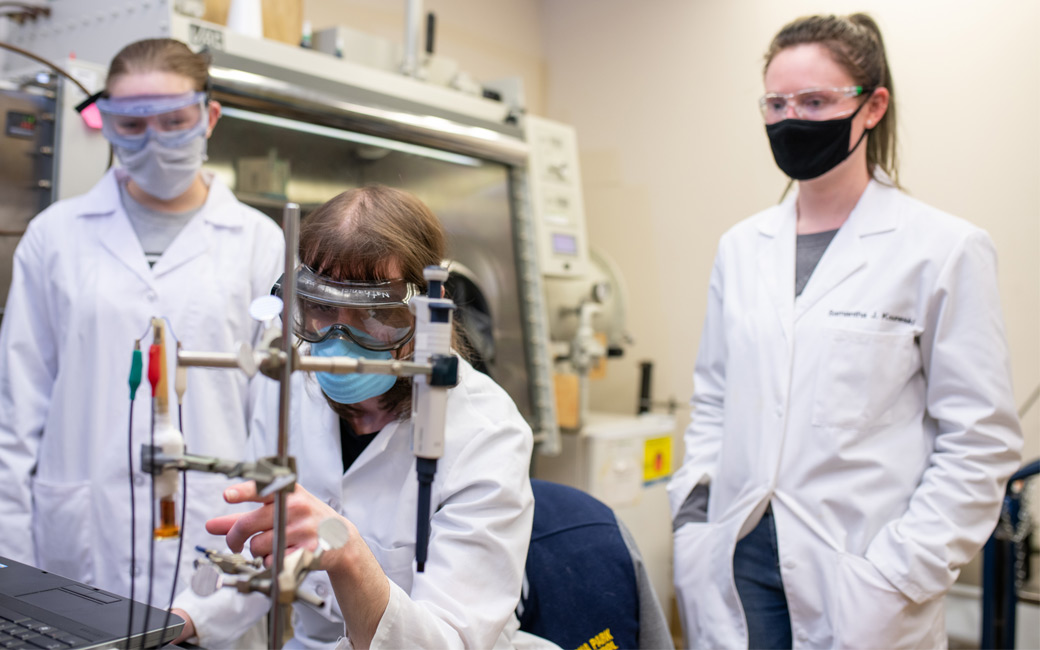
Towson University research students are discovering firsthand the massive impact nanoparticles can have on the world.
Mary S. Devadas, an assistant professor in the Department of Chemistry, runs a lab where undergraduates, graduate students and even high school students work with rare metals like gold, silver and platinum to synthesize functional nanostructures—tiny but mighty components of everything from iridescent butterfly wings to military body armor.
“When you change the size and shape of these nanostructures, they have unique electrical and chemical properties that you can harness for a variety of applications,” Devadas says.
Her lab isn’t currently investigating the direct applications, though. Rather, its staff is performing the fundamental work of creating and understanding them so other scientists will be able to build on.
Two possible applications of nanoparticles could transform medicine.
One way that could transform cancer treatment, Devadas says, is by delivering drugs directly to a cancer cell, rather than flooding the whole body with the drug, minimizing side effects and increasing drug efficiency.
The other potential application is using the nanostructures, designed to respond to a certain wavelength of light, to destroy cancer cells by burning them from the inside.
Devadas and her students collaborate with Elana Ehrlich, an associate professor in the Department of Biology who researches the modulation of cellular processes, to examine potential drug delivery applications.
Using nanostructures for light harvesting is another area Devadas’ students study, in partnership with associate chemistry professor Keith Reber. That work could be used to create supercapacitors for solar cells, making solar panels more efficient by increasing their capacity for generating and storing energy.
Another collaboration—with Vera Smolyaninova, a professor in the Department of Physics, Astronomy & Geosciences—looks at designing another type of synthesized material called a ferrofluid and understanding its potential applications.
The Devadas lab also spends time researching single particle spectroscopy techniques to better understand how to best research and analyze functional nanostructures.
Student Success
Nicole Hondrogiannis, a senior who has worked in Devadas’ lab for four years, has already been published twice in a scientific journal, a rare achievement for an undergraduate.
Working in the lab has given her “the opportunity to grow as a scientist and explore the scientific community,” she says.
Hondrogiannis, who won a prestigious Goldwater Scholarship, intends to pursue a doctorate at the University of North Carolina, Chapel Hill.
Another senior, Lynn Krushinski, credits the lab with turning around her academic career.
“ I went from, ‘I might even drop out of school,’ to an inorganic chemistry Ph.D. program. ”
“I was a really poor student. I wasn’t strongly motivated or getting involved in clubs or research,” she says.
But after a classmate invited her to participate in research, Krushinski says she began to see a place for herself in the science world. Now she, like Hondrogiannis, intends to pursue a doctorate at UNC Chapel Hill.
“I went from, ‘I might even drop out of school,’ to an inorganic chemistry Ph.D. program,” she says.
“Coming into research really allowed me a chance to prove myself, even to myself,” she says. “It is nice to know that anybody can be a researcher if you are willing to put in the time and commitment.”
Krushinski hasn’t published yet but says she intends to at least have a draft submitted by the time she graduates.
Building Science Identity
Through an initiative called Building Science Identity, Devadas invites high school students to work in her lab. Ellen Hondrogiannis, an associate professor in the Department of Chemistry, is the assessor for the program and a collaborator on some spectroscopy work. The program was made possible because of grants from the Mid-Atlantic CIO Forum and the TU Foundation.
The high schoolers participate in a two-week summer internship and then a one- or two-year volunteer internship in the lab if they’re interested.
Devadas has mentored 11 graduate students, 24 high school students and 42 undergraduates since she began working at TU in fall 2015.
“The high school students and the undergraduate students work together to run workshops in local high schools,” in addition to researching in the lab, Devadas says, providing another opportunity for leadership.
And the students mentor each other, just as Devadas mentors them.
“Part of science is training the next generation of students,” Nicole Hondrogiannis says. “They’re so inspired at such a young age. They haven’t been told ‘No.’ They still have their doors wide open. They’re eager; they’re ready to learn.”
